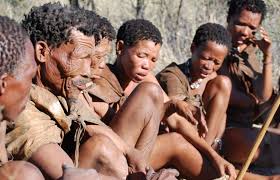Scientists at Nanyang Technological University (NTU Singapore) and Penn State University in the United States have successfully discovered one of modern humans’ ancient lineages through the sequencing of genes.
A geneticist from NTU, Professor Stephan Christoph Schuster, who led an international research team from Singapore, United States and Brazil, said this is the first time that the history of humankind populations has been analysed and matched to Earth’s climatic conditions over the last 200,000 years.
Their breakthrough findings were published in Nature Communications the 4th of December.
The team has sequenced the genome of five living individuals from a hunter/gatherer tribe in Southern Africa, and compared them with 420,000 genetic variants across 1,462 genomes from 48 ethnic groups of the global population.
 Through advanced computation analysis, the team found that these Southern African Khoisan tribespeople are genetically distinct not only from Europeans and Asians, but also from all other Africans.
Through advanced computation analysis, the team found that these Southern African Khoisan tribespeople are genetically distinct not only from Europeans and Asians, but also from all other Africans.
The team also found that there are individuals of the Khoisan population whose ancestors did not interbreed with any of the other ethnic groups for the last 150,000 years and that Khoisan was the majority group of living humans for most of that time until about 20,000 ye ars ago.
ars ago.
Their findings mean it is now possible to use genetic sequencing to reveal the ancestral lineage of any ethnic group even up to 200,000 years ago, if non-admixed individuals are found, like in the case of the Khoisan. This will show when in history there have been important genetic changes to an ancestral lineage due to intermarriages or geographical migrations that may have occurred over the centuries.
Find more information at:











